We are a little over a month out from the opening of a new exhibition entitled, “Toys Ahoy! A Maritime Childhood.” The exhibit will put a playful spin on the typical maritime history exhibit with plenty of toys, games, and books to excite both the young and the young at heart.
Here in the paper conservation lab, I helped prepare for the exhibit by completing treatments on paper-based collection materials being brought out for display. While the treatments all involved paper in some shape or fashion, it’s safe to say that the types of objects coming across my bench were a bit outside the (two-dimensional) range of what I typically work on here at the museum. Instead of the normal prints, drawings, documents, and photos I have been treating, this exhibit brought me board games, puzzles, toy ships decorated with paper, and even a pop-up book!
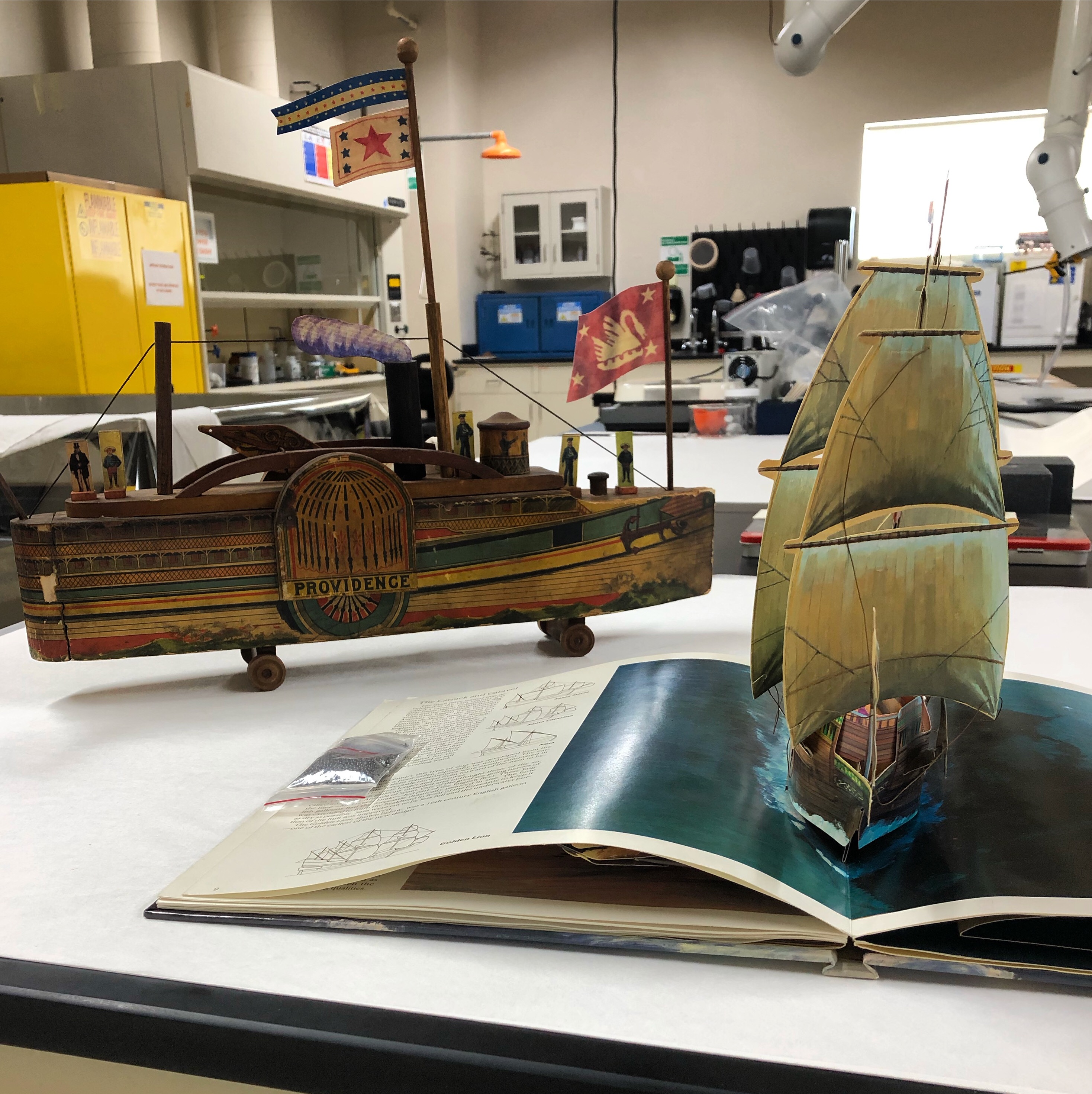
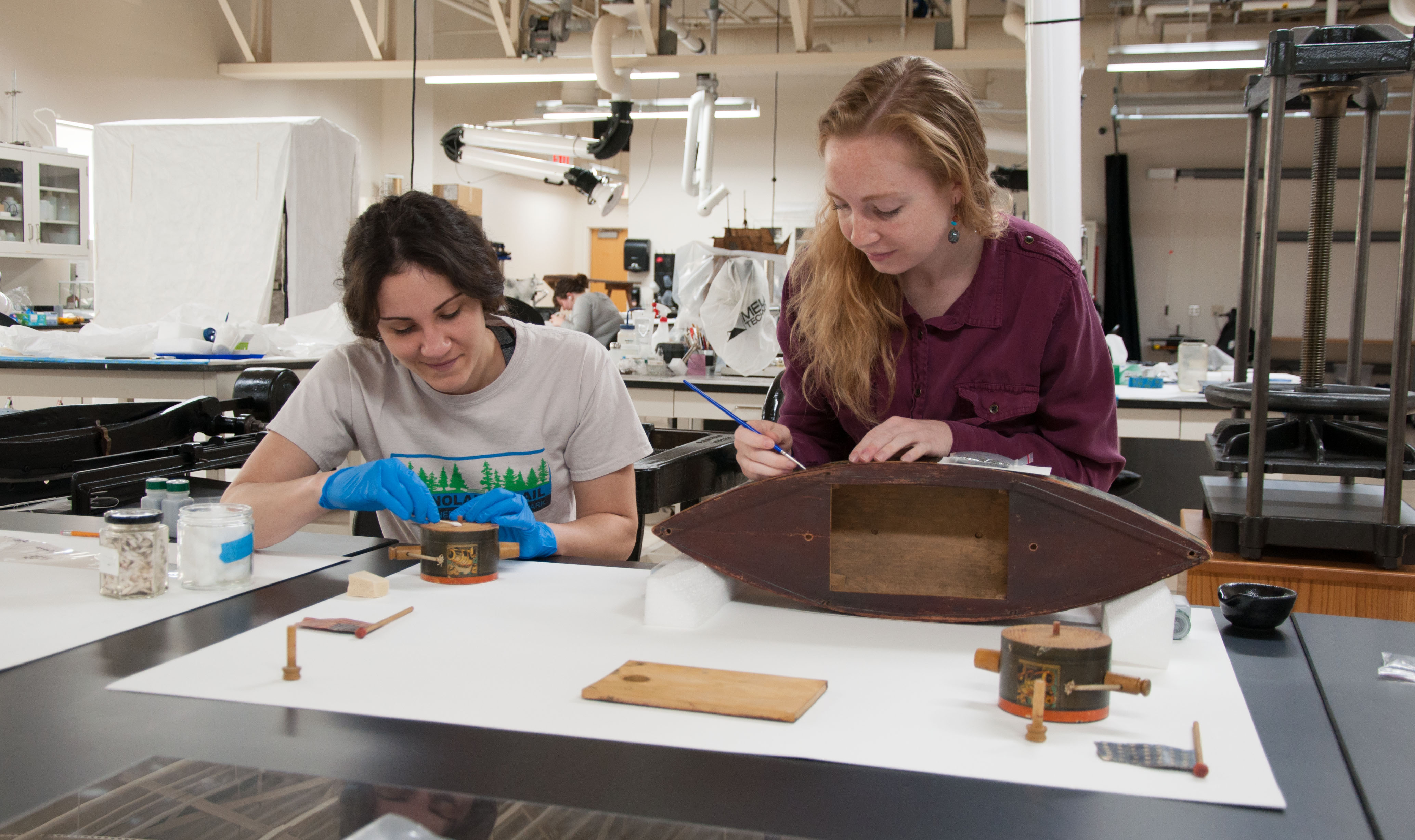
One of the more unique objects I treated ahead of Toys Ahoy! was the Milton Bradley Myriopticon. A great post was written about this object when it was first acquired by the museum in 2014, so be sure to read more about its history here. In short, the object is a toy theater which illustrates events from the Civil War when the operator turns the rollers to move the paper scroll held inside.
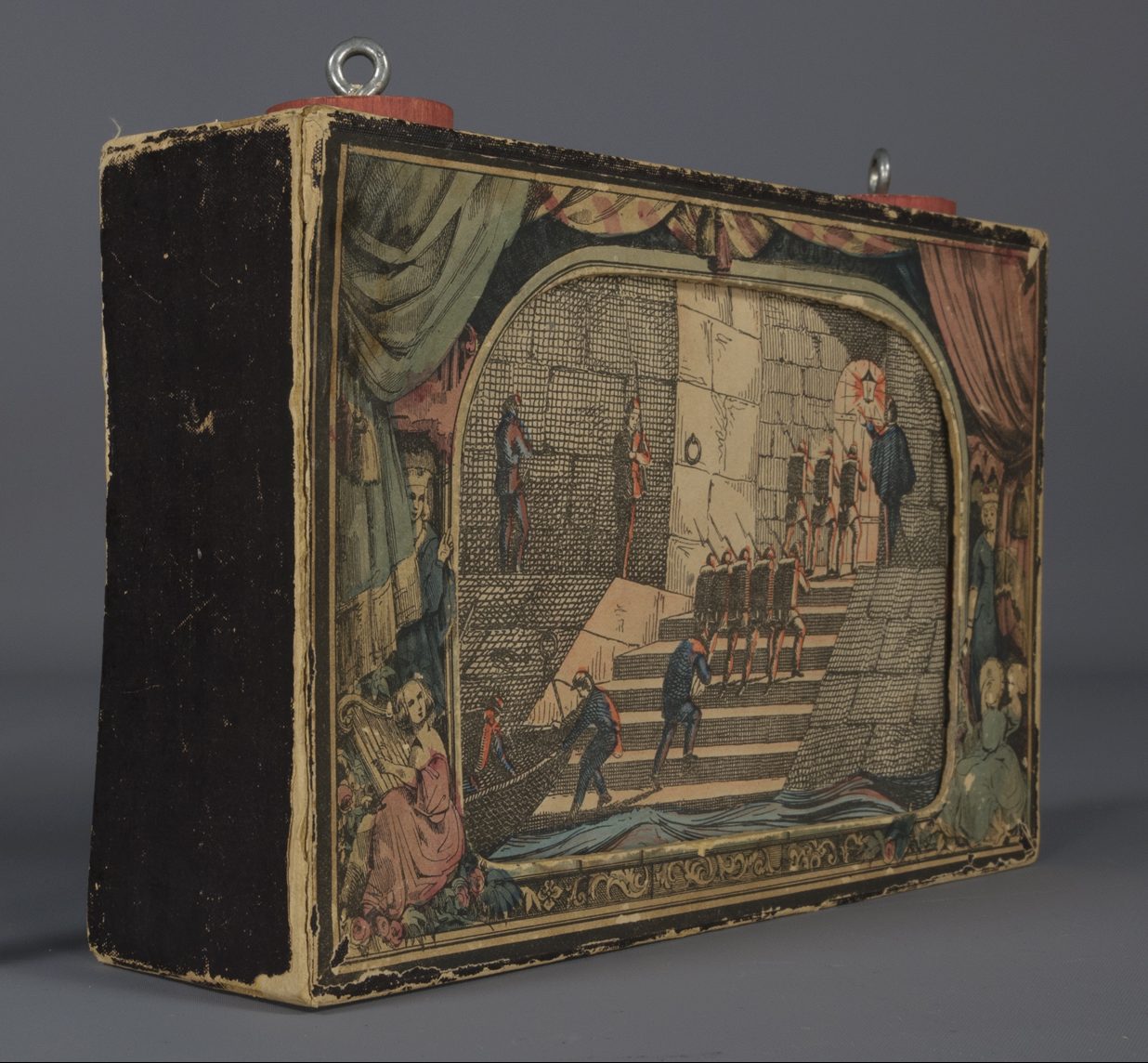
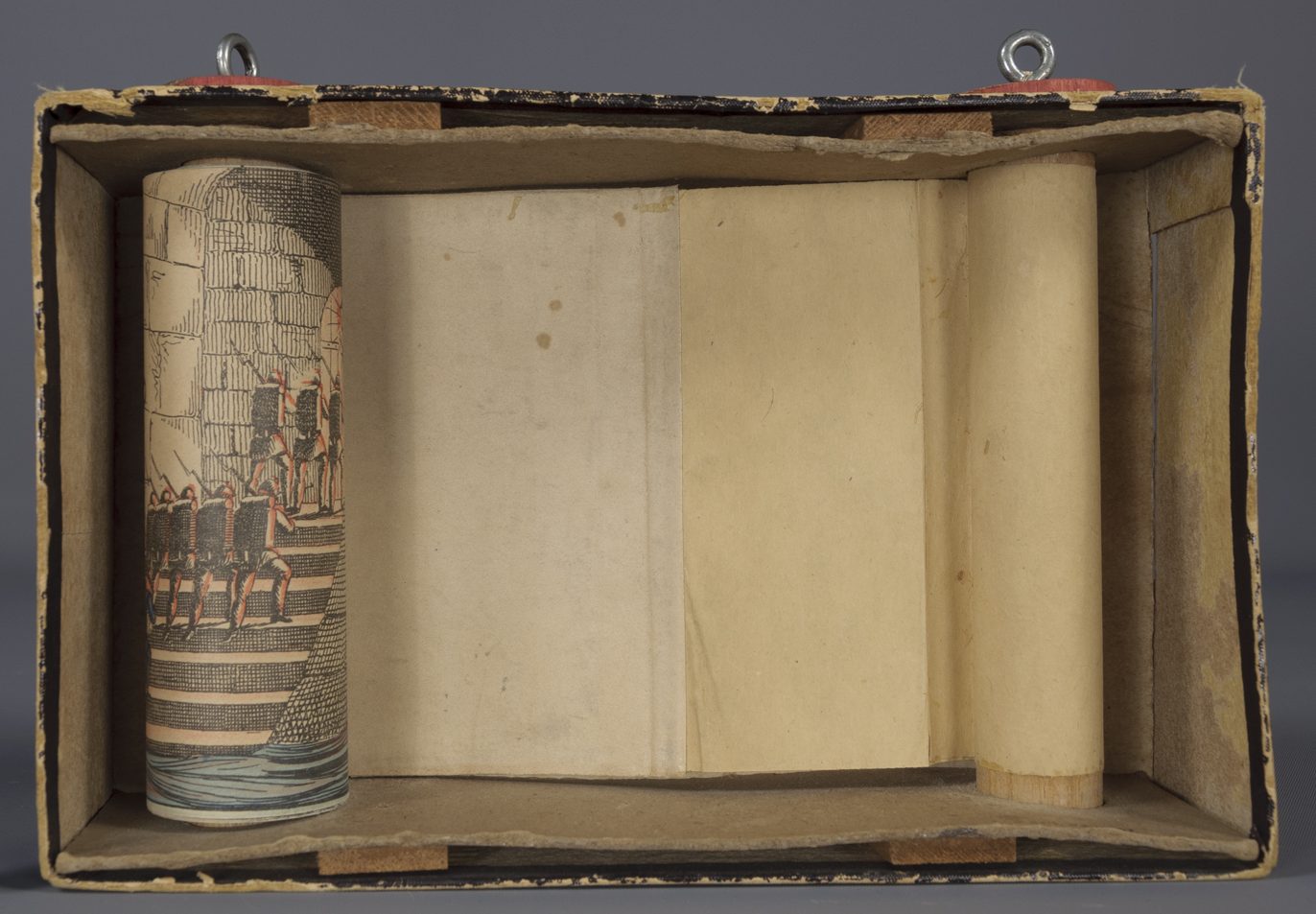
The condition of the Myriopticon when the museum accessioned it could be described as “well-loved.” The cardboard structure housing the printed paper scroll was split completely along one side, making the structure weak and difficult to handle safely. The paper scroll itself had several tears and stains. Additionally, the components used internally to aid in maintaining the alignment of the scroll were detached, causing the edges of the paper to rub against the cardboard when moving, leading the paper to tear and wrinkle.
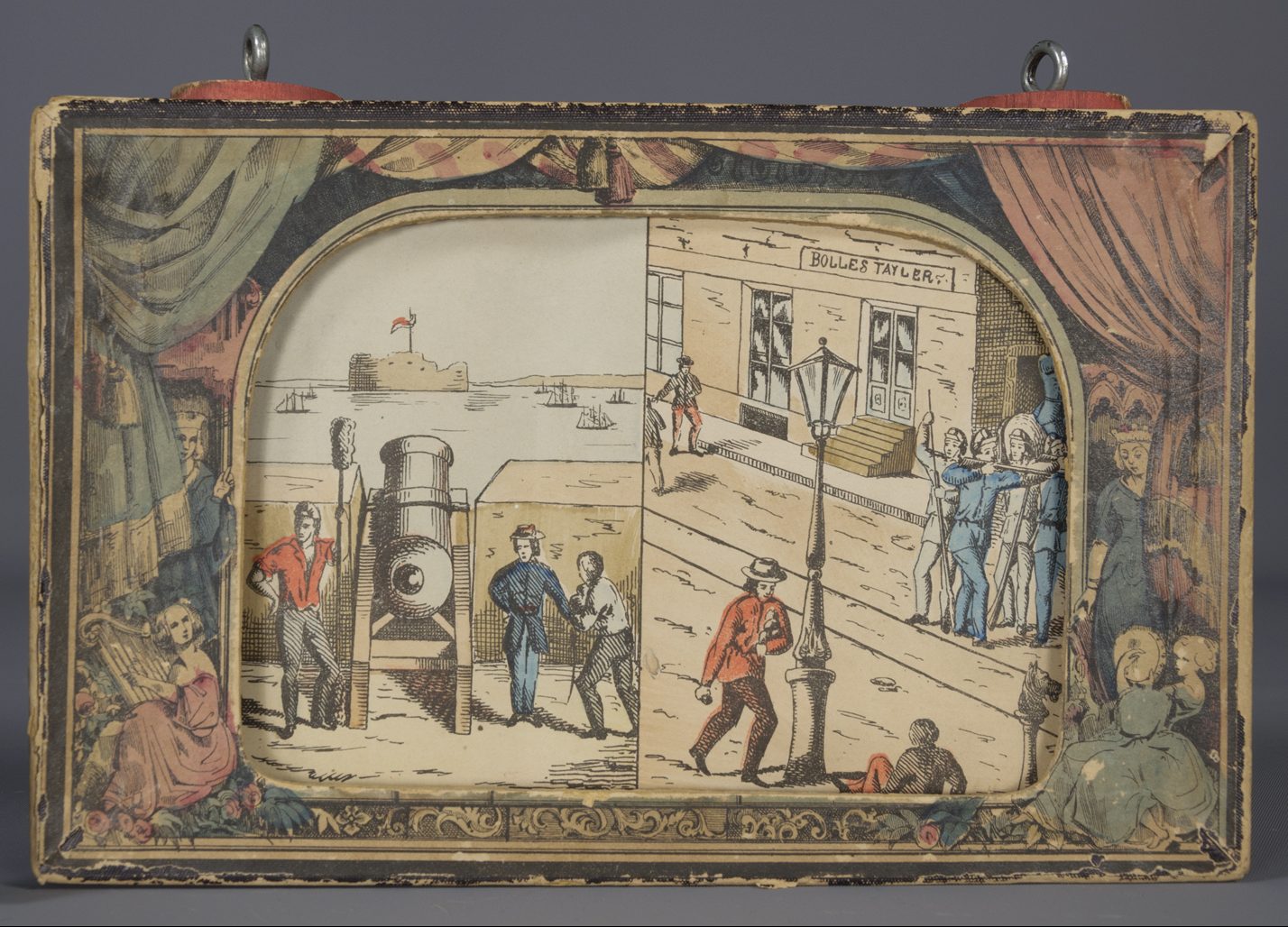
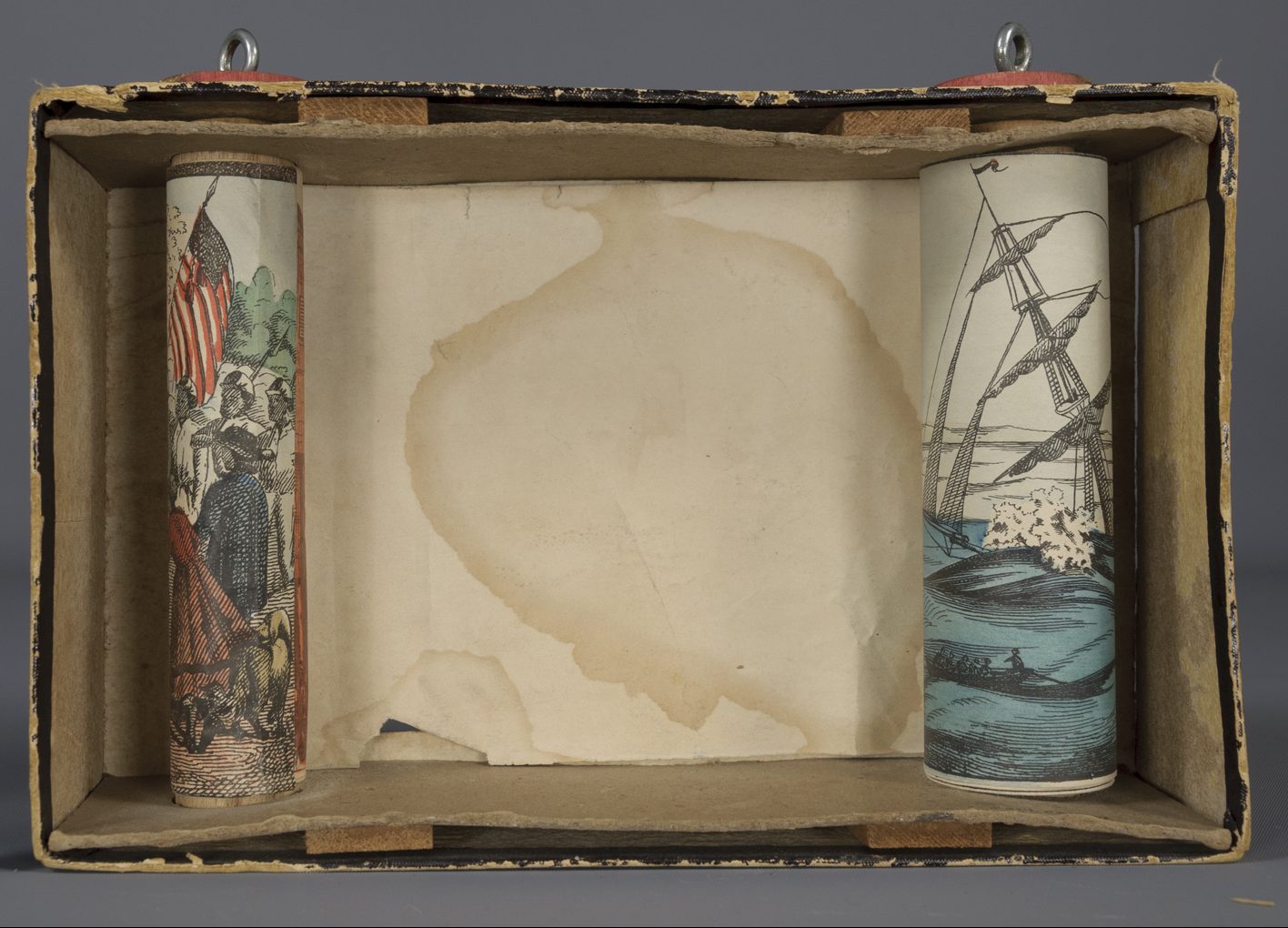
My primary goal for the treatment was to stabilize the object, both for display and for careful operation. I was not trying to restore the aesthetic qualities of the piece to make it look new again, because the visible wear and tear showing on the surface was evidence of its use throughout its life, something conservators always try to preserve when possible.
To address the structural issues of the cardboard housing, Japanese paper was used to bridge the separated areas and hold them securely together. The long fibers found in this type of paper give it extra strength – perfect for structural repairs. The paper was toned with acrylic paints to match the cardboard underneath, rather than the black decorative facing paper, in order to blend the repair visually with the overall level of wear to the piece. To further obscure the new paper, it was inserted underneath the surrounding decorative facing paper and adhered directly to the underlying cardboard.


The tears in the paper scroll were mended using thin strips of Japanese paper adhered to the backside with wheat starch paste. Wheat starch paste is a common conservation adhesive valued for its aging properties and reversibility in water. The mends to the paper will ensure the tears do not rip further when under tension while the theater is in operation.
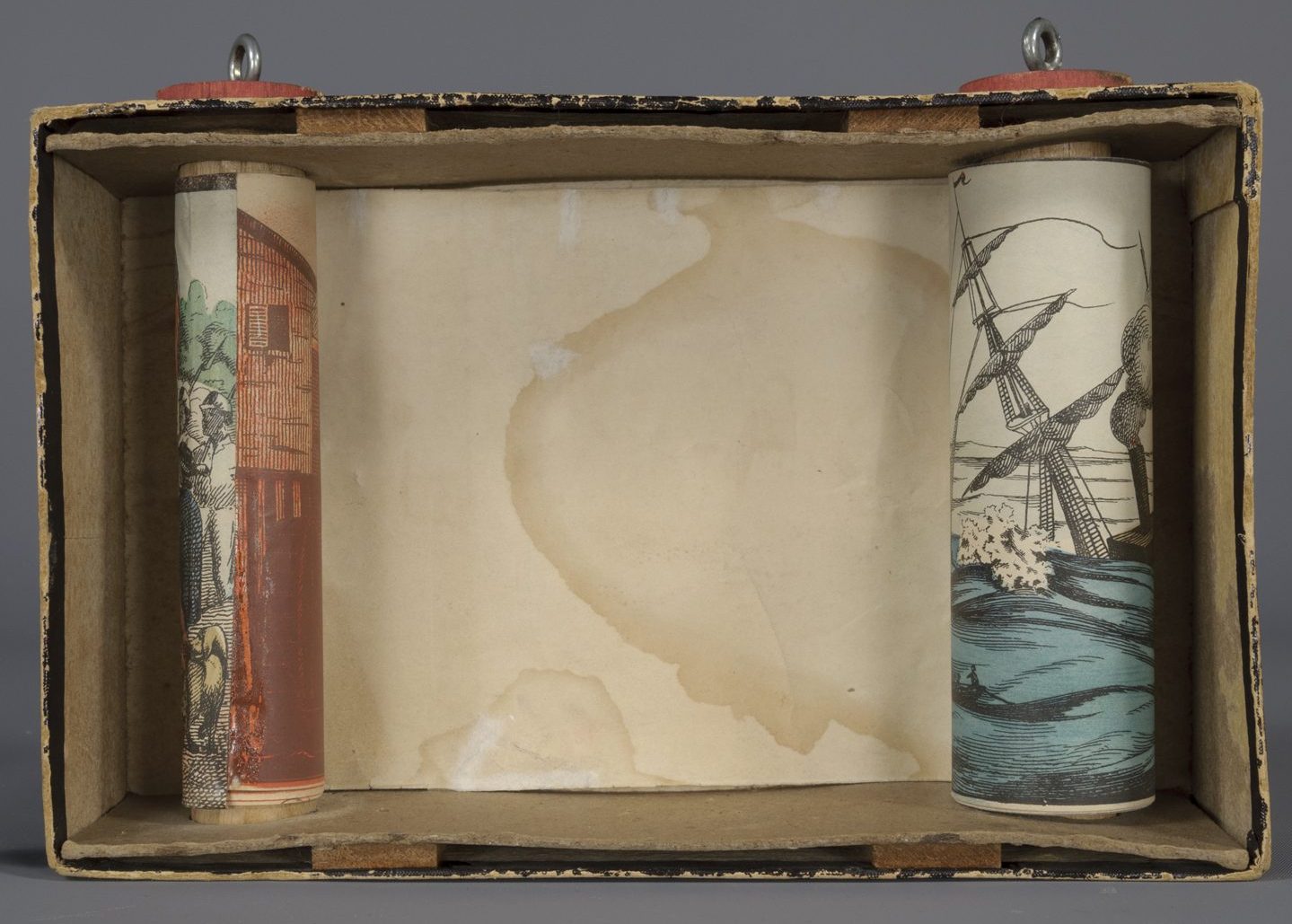
The internal mechanism to maintain alignment of the scroll when it progressed from one spool to the other was reattached in place using polyvinyl acetate adhesive, chosen for its strength and compatibility with a wide range of materials. In order to achieve a good bond, the adhesive needed to be placed accurately within a fairly tight space. To accomplish this, the adhesive was injected via syringe and the object was clamped in position to dry. Re-adhering the alignment components to the cardboard housing lifted them out of the way of the scroll, allowing the spools and paper to move freely.

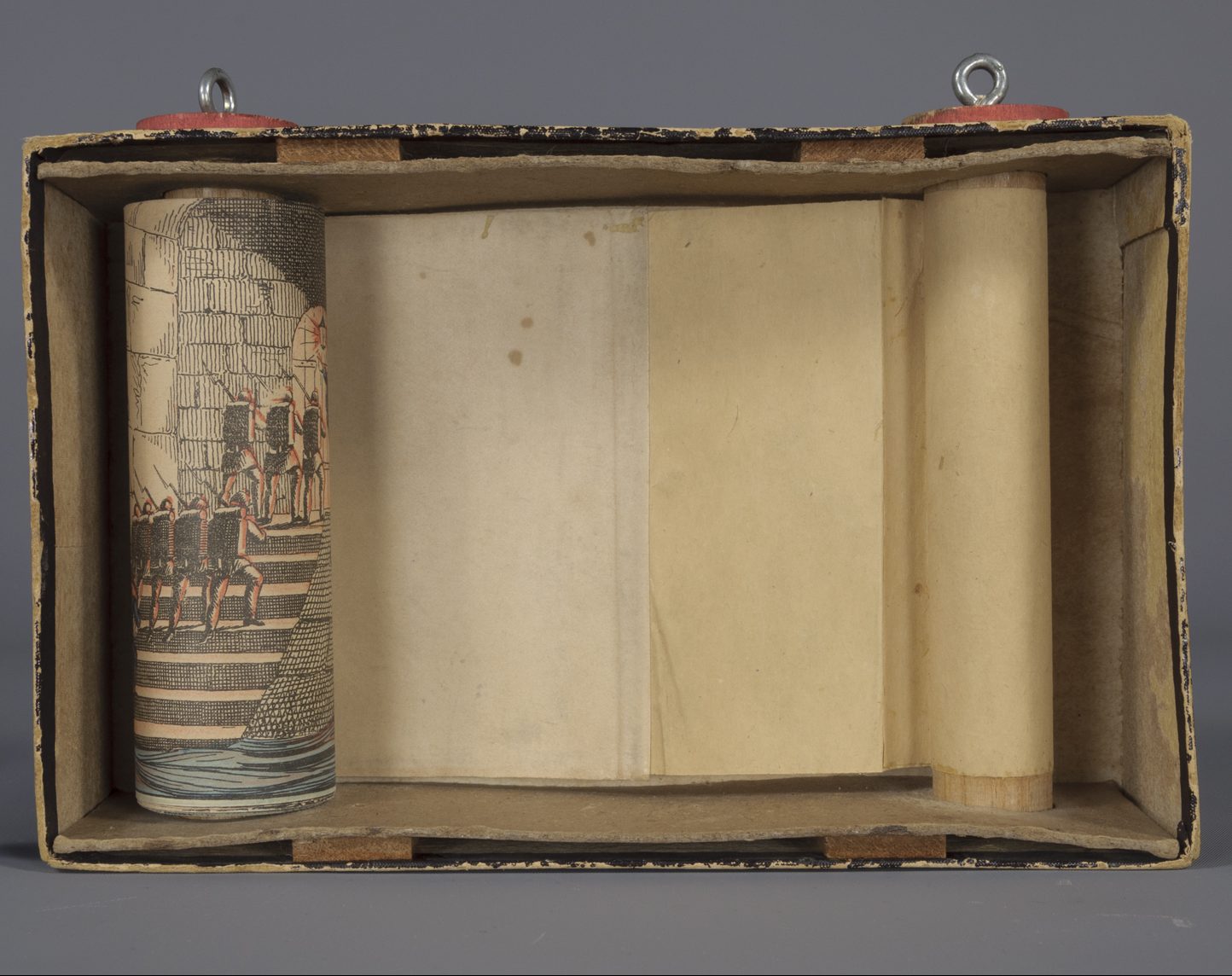
And with that, the treatment was complete! The visual improvements were subtle, but the structural stability and functionality of the piece were dramatically improved. The images below show the toy before and after the conservation treatment.
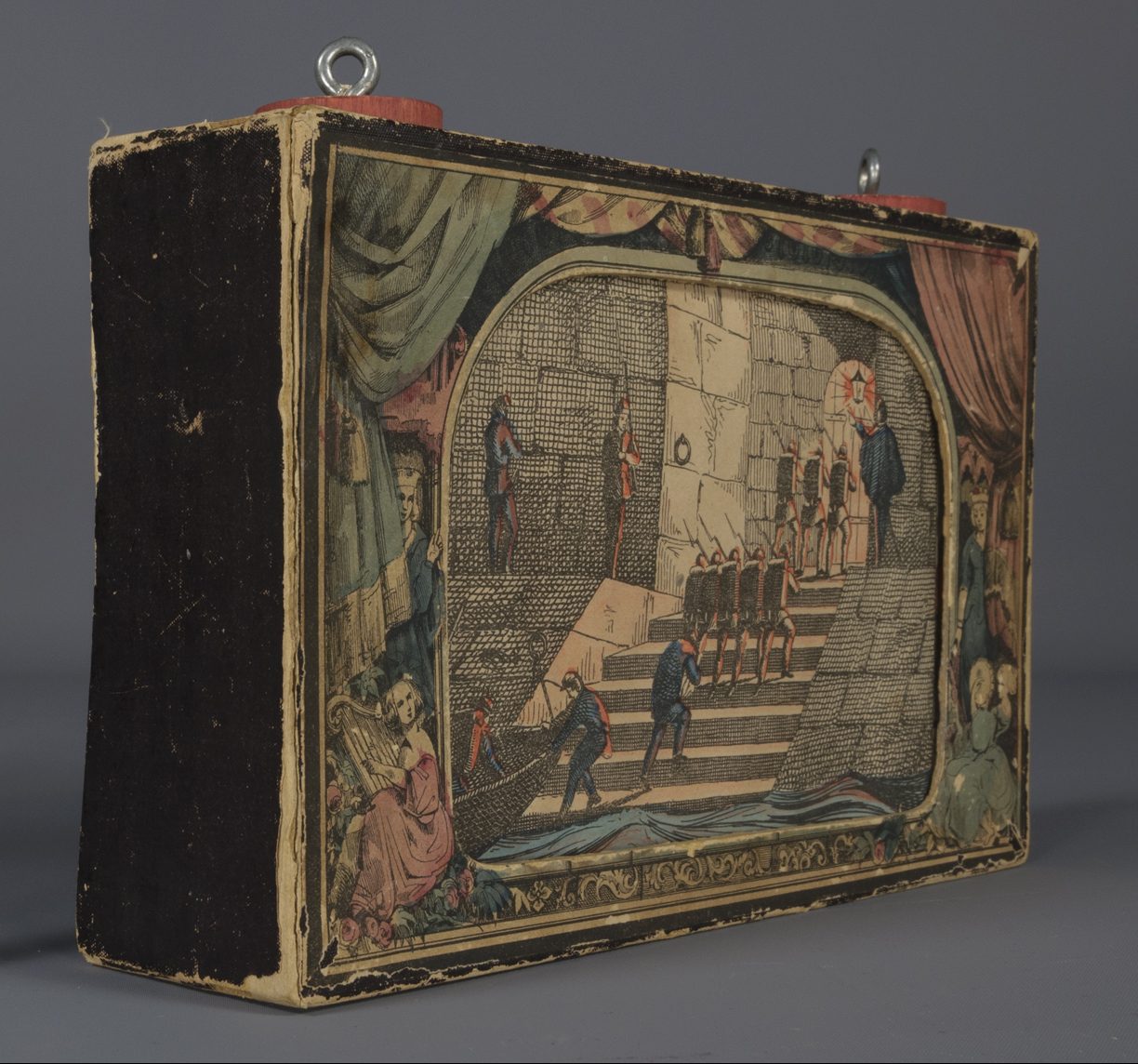
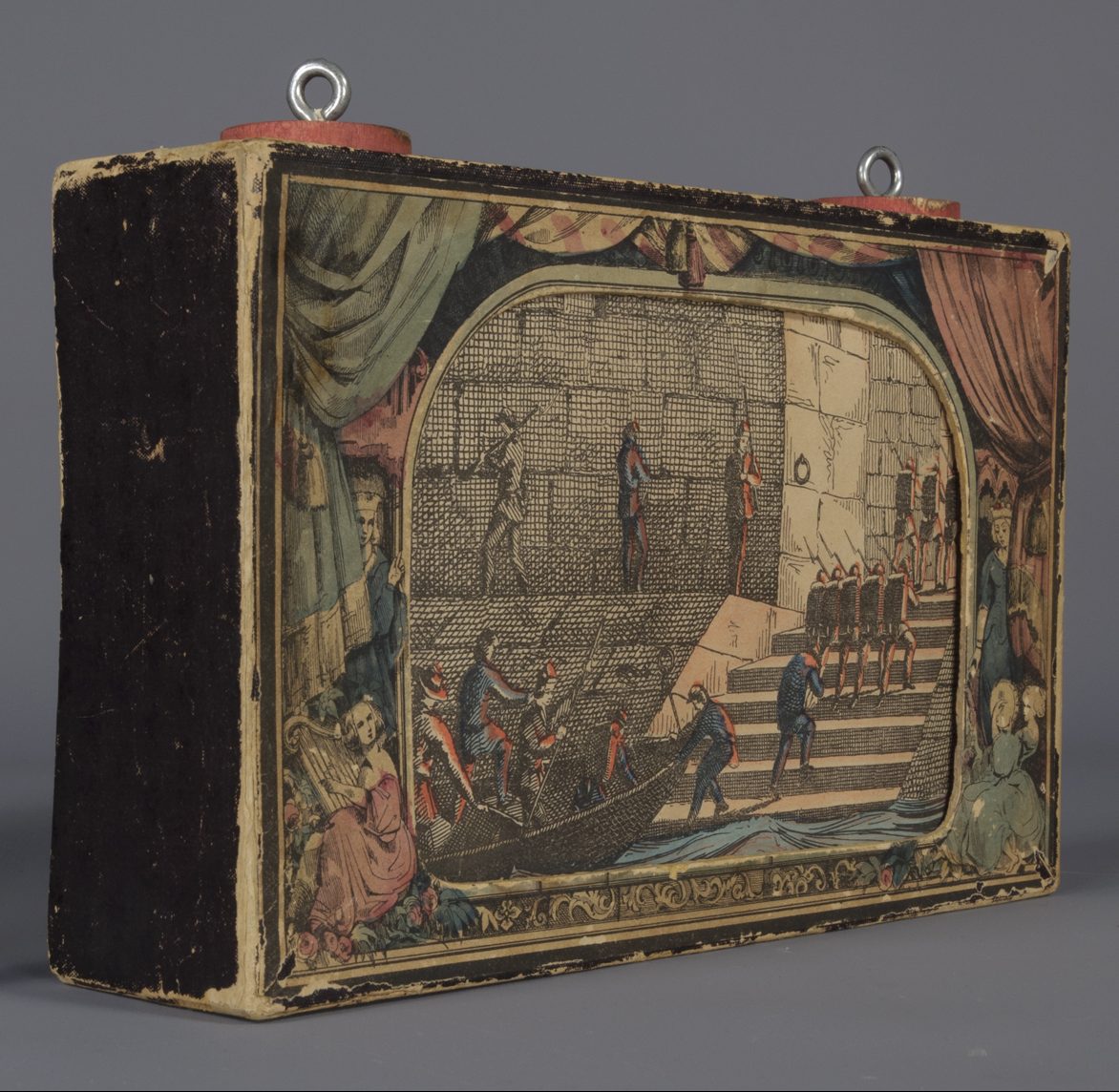
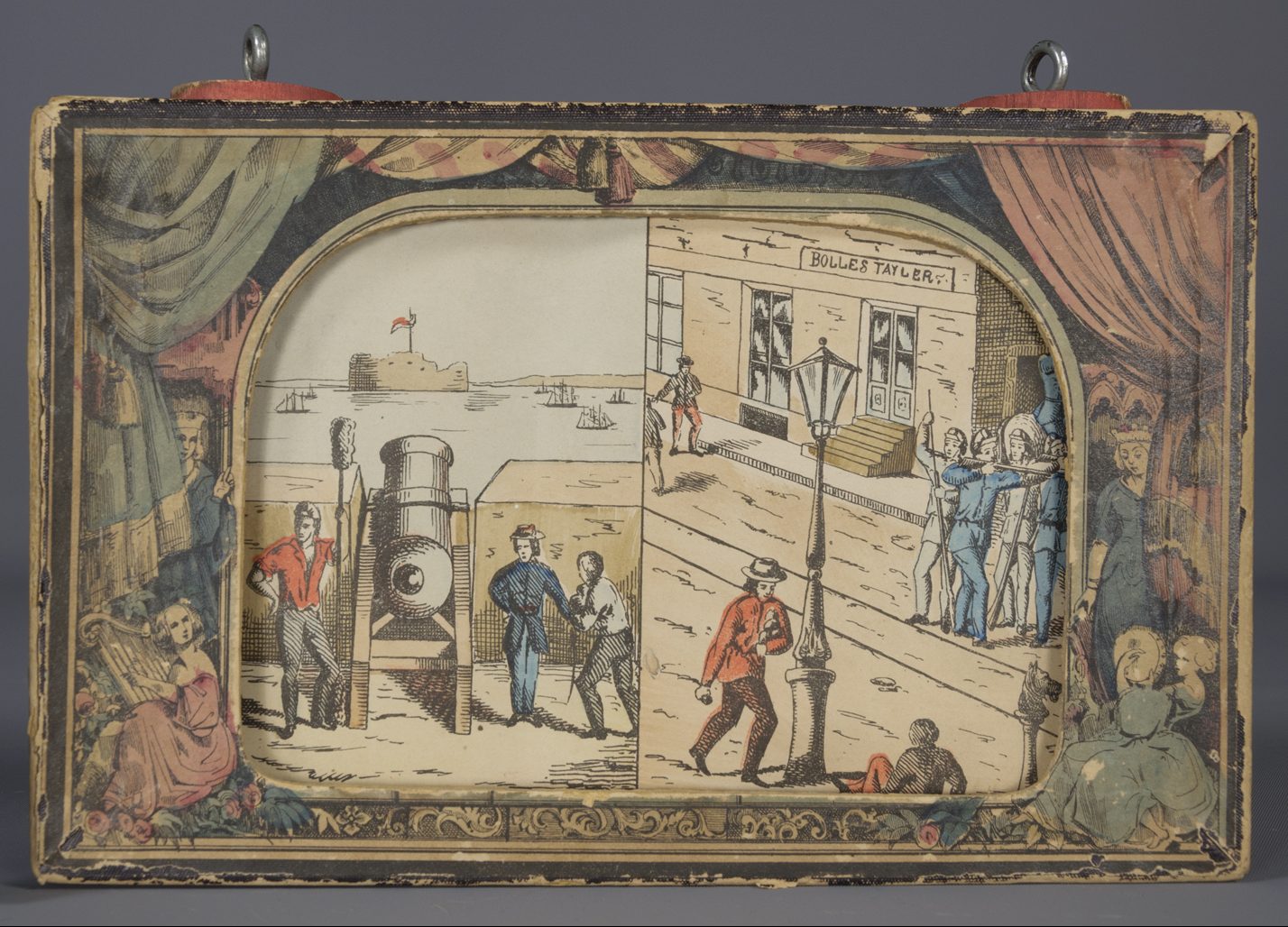
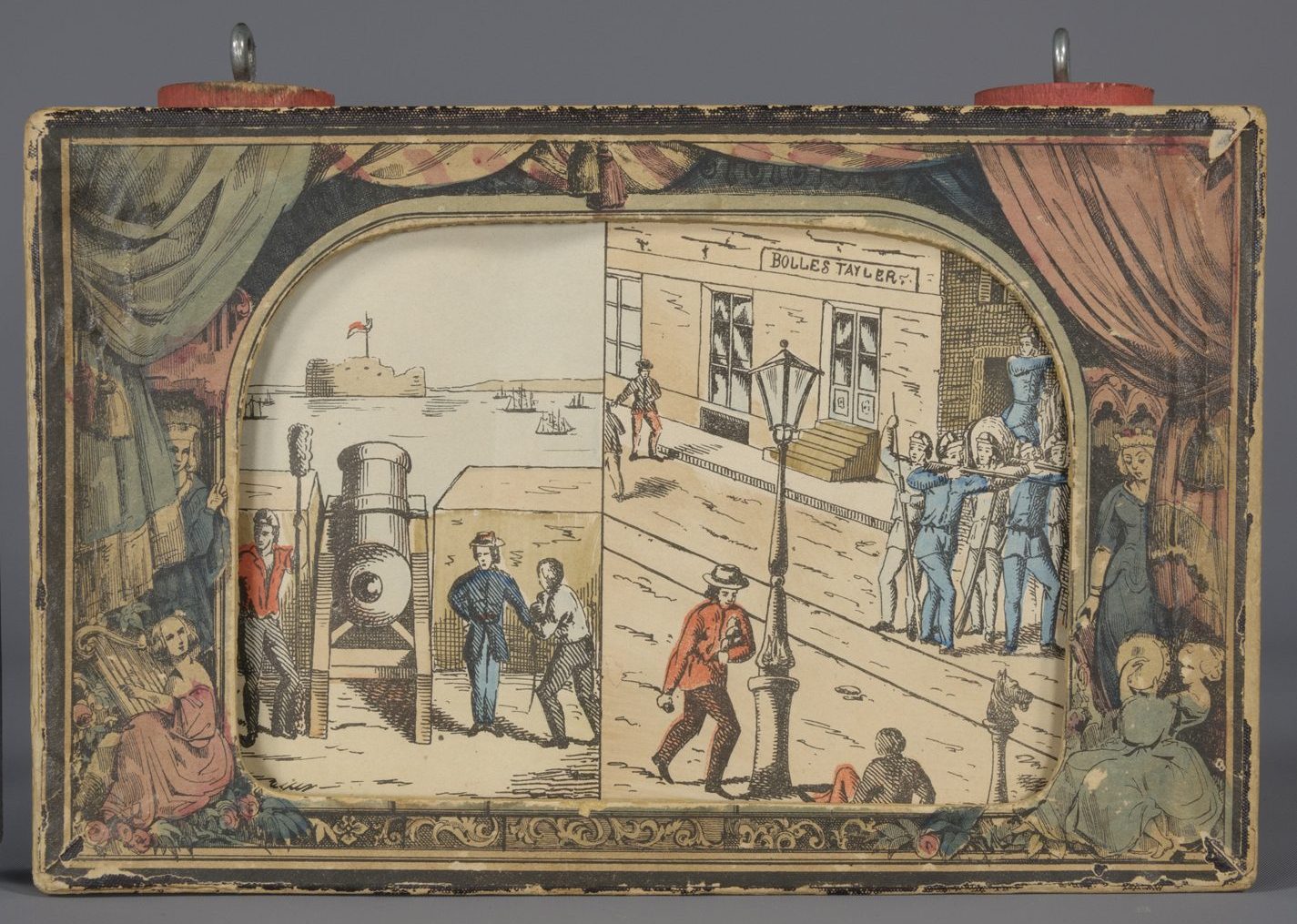
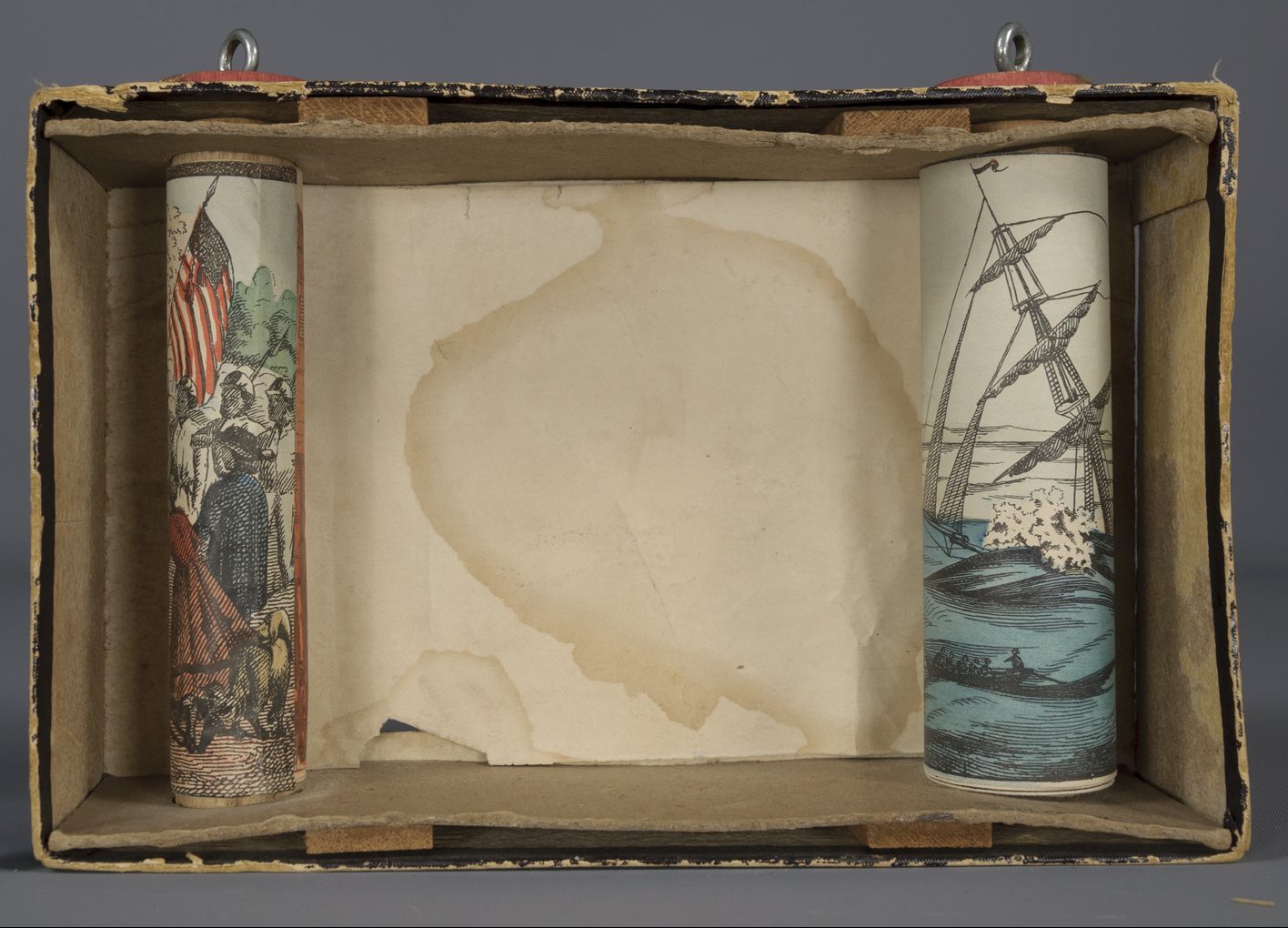
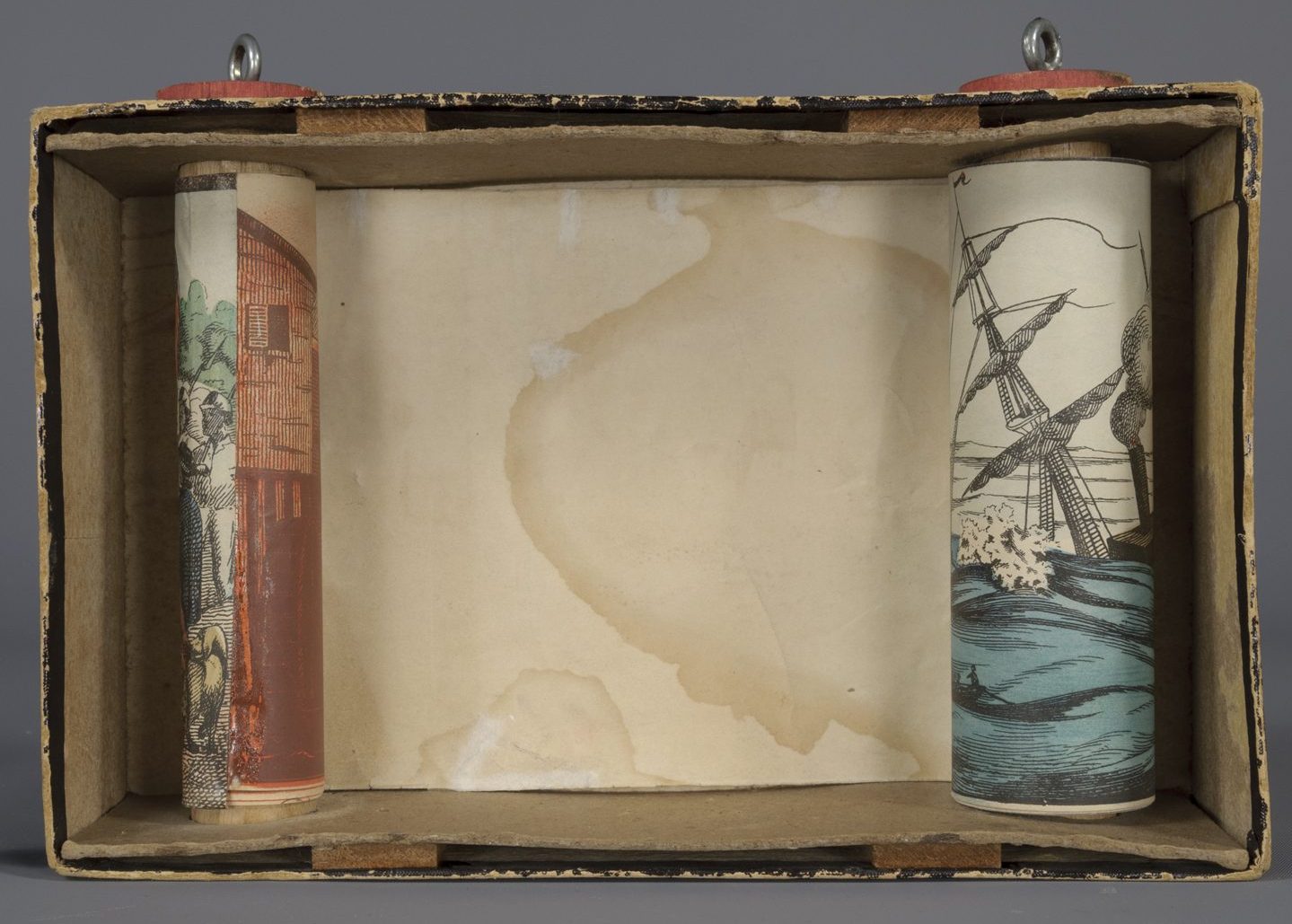
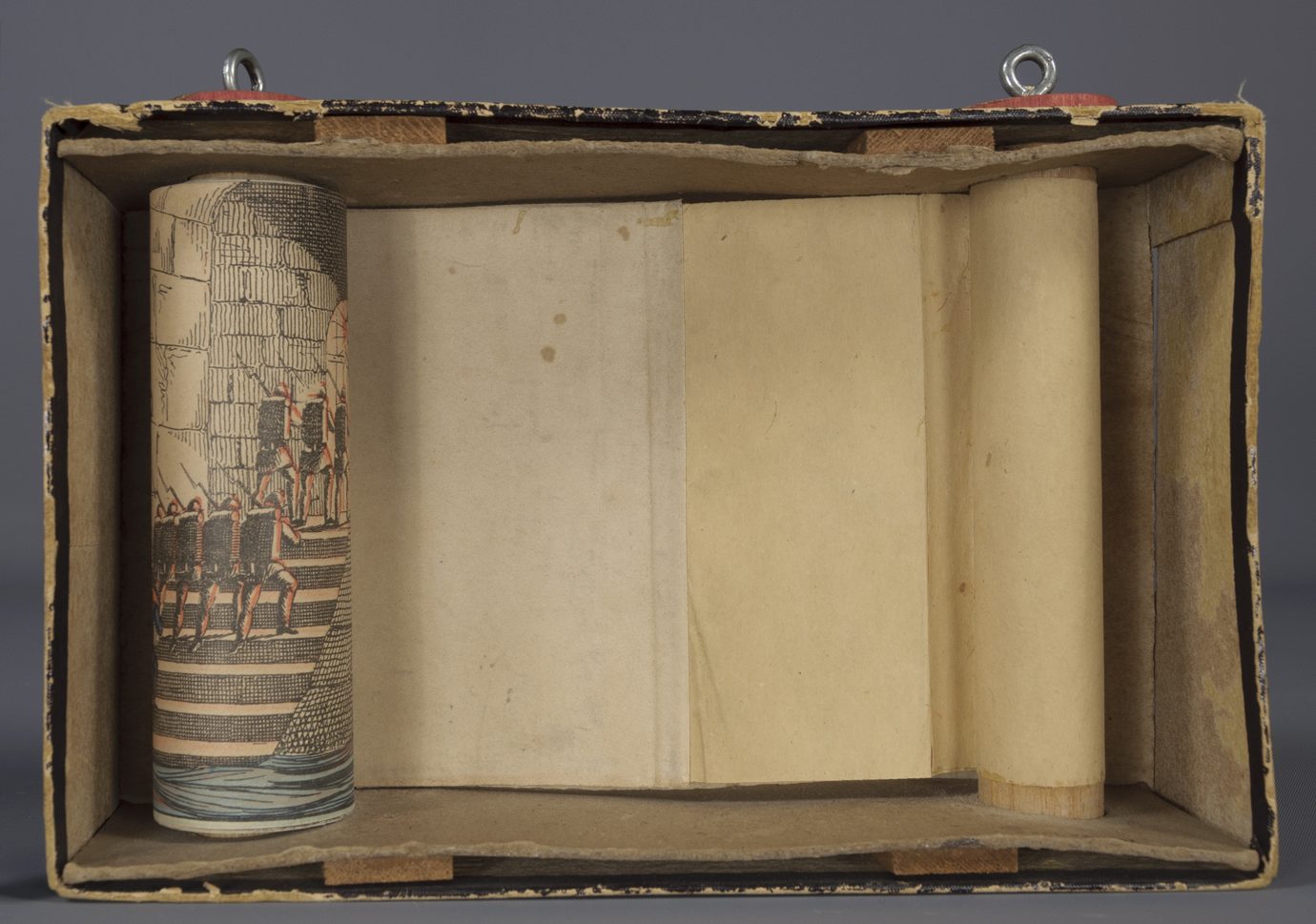
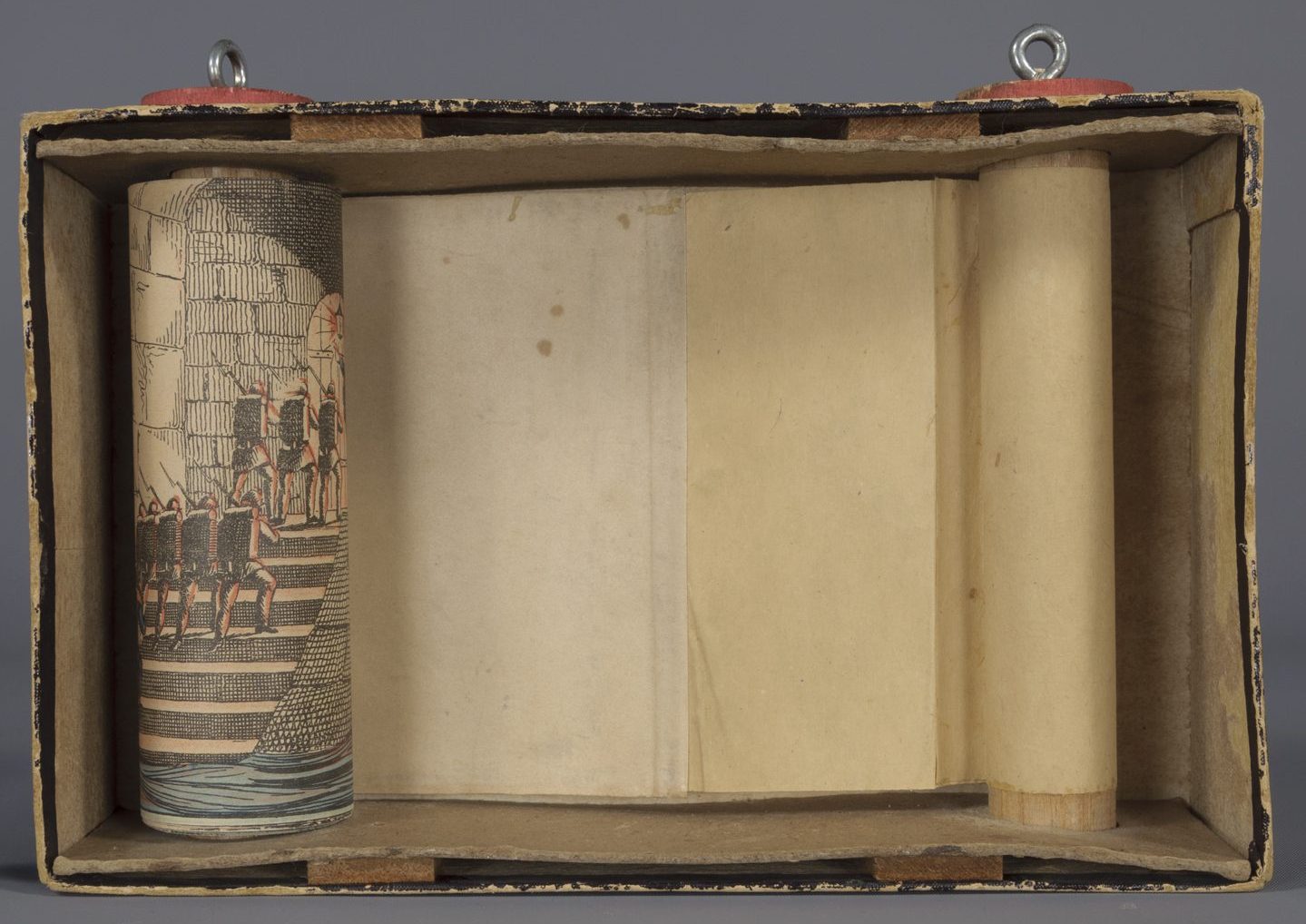
Normally, my direct involvement with an exhibit object ends after treatment and documentation, but as mentioned earlier, Toys Ahoy! has had me working outside the realm of “normal” paper conservation. Since movement is a critical part of the interpretation and understanding of this particular object, a few of us from various departments put our heads together to figure out how best to (safely) incorporate this aspect into the exhibition. We decided to shoot a video of the show from beginning to end.
The video would serve two purposes. First, it would allow those viewing the toy on display to see how it was meant to be used and to take in all the scenes which are not visible when it is still. Second, it could be used in place of actual manipulation of the toy in future research endeavors. Although the conservation of the Myriopticon made manipulation much safer, any movement still causes small amounts of wear and should be kept to a minimum.

Filming was a team effort, with the museum photographer managing the recording, the content developer for the exhibit keeping an eye on the story, and myself operating the theater mechanism. Afterward, the audiovisual department edited the video to speed up and smooth out the scene transitions.
In addition to the Myriopticon, several other toys in the exhibit will be accompanied by videos showing how they would be used, including “Billy, the Ball Blowing Magic Whale” and “Big Caesar, A Roman War Ship.”
Video plays a unique role in connecting visitors with this exhibit, which is filled with objects that were not originally meant to be put behind glass and looked at, but instead were built to be handled and played with by little hands. Be sure to come out and experience Toys Ahoy! A Maritime Childhood, opening November 16th!
And now, our feature presentation…